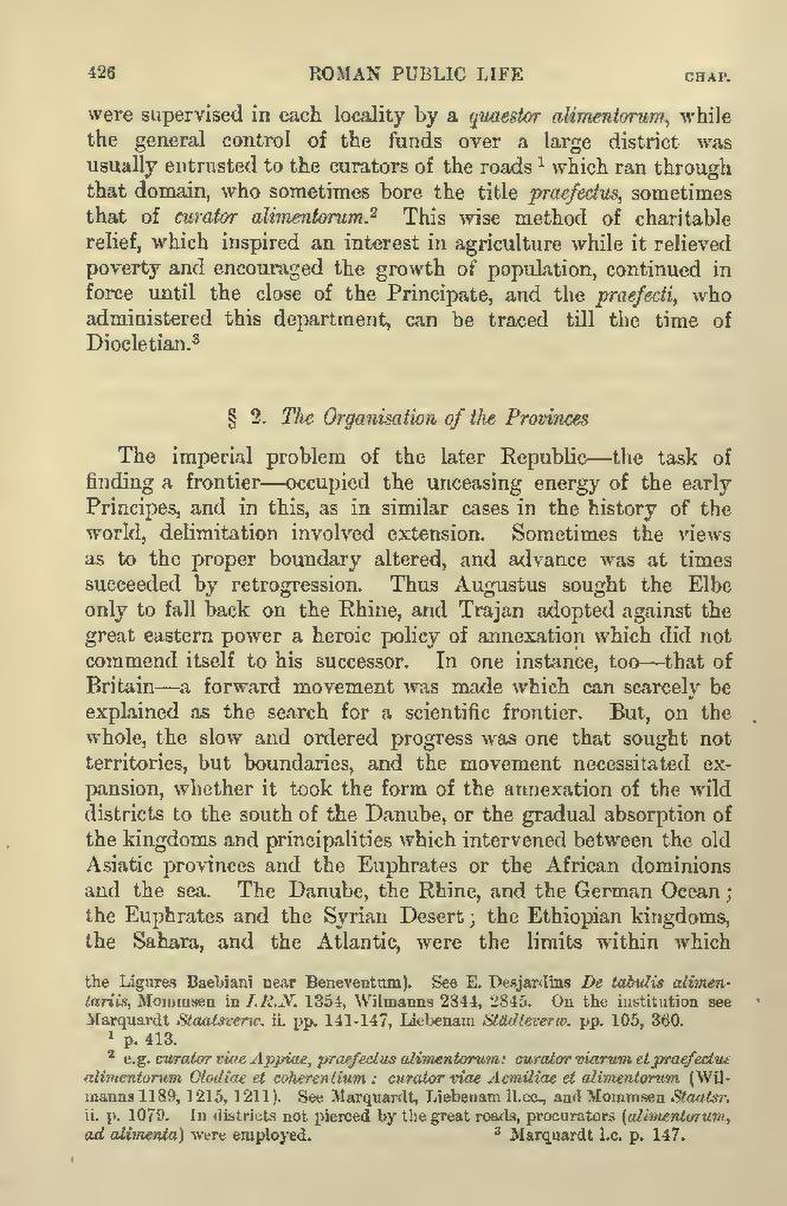were supervised in each locality by a quaestor alimentorum, while the general control of the funds over a large district was usually entrusted to the curators of the roads[1] which ran through that domain, who sometimes bore the title praefectus, sometimes that of curator alimentorum.[2] This wise method of charitable relief, which inspired an interest in agriculture while it relieved poverty and encouraged the growth of population, continued in force until the close of the Principate, and the praefecti, who administered this department, can be traced till the time of Diocletian.[3] § 2. The Organisation of the Provinces
The imperial problem of the later Republic—the task of finding a frontier—occupied the unceasing energy of the early Principes, and in this, as in similar cases in the history of the world, delimitation involved extension. Sometimes the views as to the proper boundary altered, and advance was at times succeeded by retrogression. Thus Augustus sought the Elbe only to fall back on the Rhine, and Trajan adopted against the great eastern power a heroic policy of annexation which did not commend itself to his successor. In one instance, too—that of Britain—a forward movement was made which can scarcely be explained as the search for a scientific frontier. But, on the whole, the slow and ordered progress was one that sought not territories, but boundaries, and the movement necessitated expansion, whether it took the form of the annexation of the wild districts to the south of the Danube, or the gradual absorption of the kingdoms and principalities which intervened between the old Asiatic provinces and the Euphrates or the African dominions and the sea. The Danube, the Rhine, and the German Ocean; the Euphrates and the Syrian Desert; the Ethiopian kingdoms, the Sahara, and the Atlantic, were the limits within which
- [Footnote: the Ligures Baebiani near Beneventum). See E. Desjardins De tabulis alimentariis,
Mommsen in I.R.N. 1354, Wilmanns 2844, 2845. On the institution see Marquardt Staatsverw. ii. pp. 141-147, Liebenam Städteverw. pp. 105, 360.]
- ↑ p. 413.
- ↑ e.g. curator viae Appiae, praefectus alimentorum: curator viarum et praefectus alimentorum Clodiae et coherentium: curator viae Aemiliae et alimentorum (Wilmanns 1189, 1215, 1211). See Marquardt, Liebenam ll.cc., and Mommsen Staatsr. ii. p. 1079. In districts not pierced by the great roads, procurators (alimentorum, ad alimenta) were employed.
- ↑ Marquardt l.c. p. 147.
